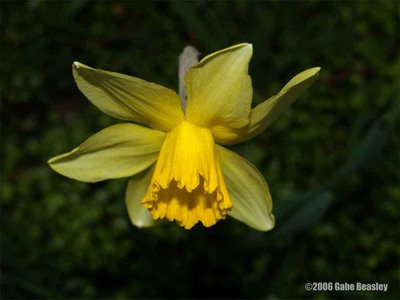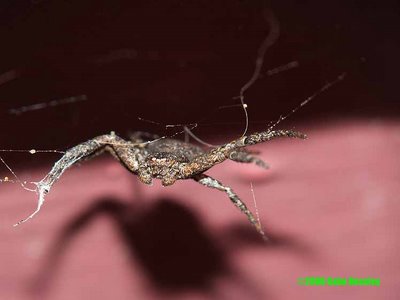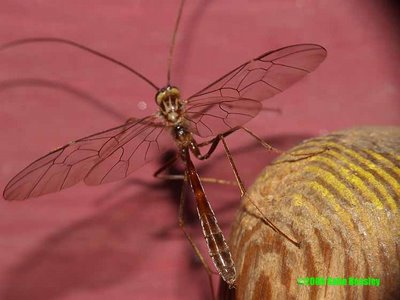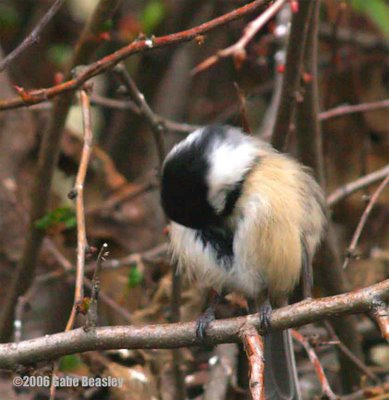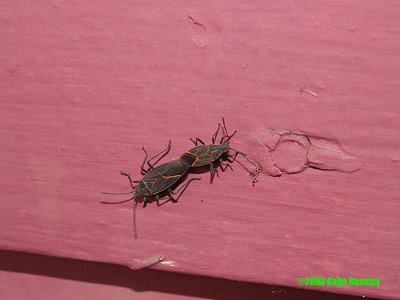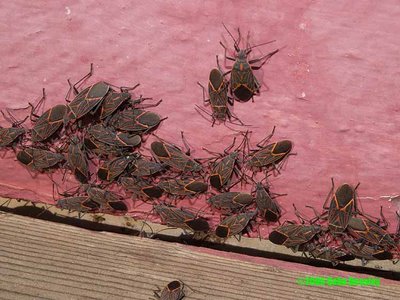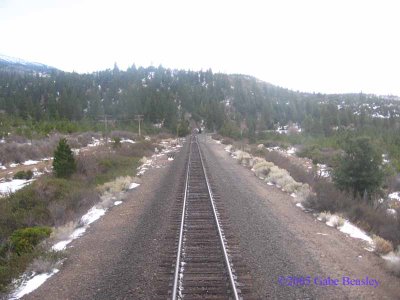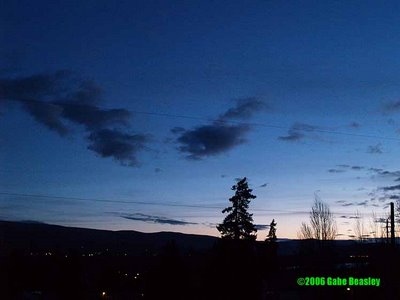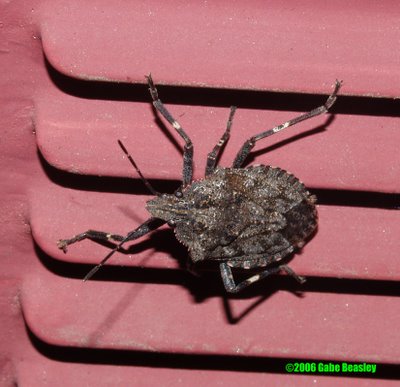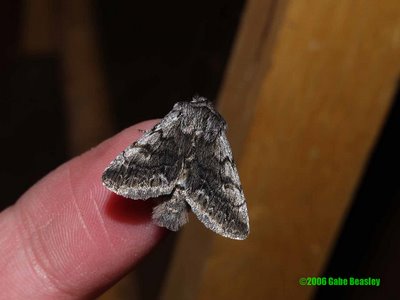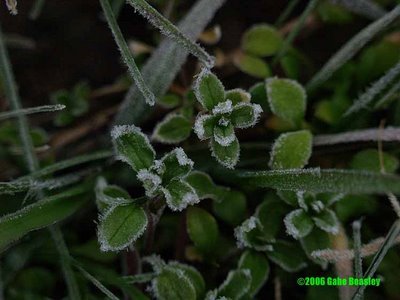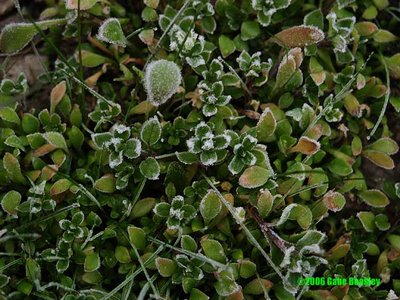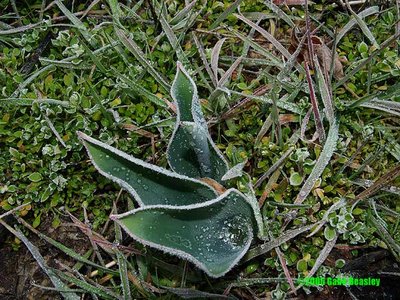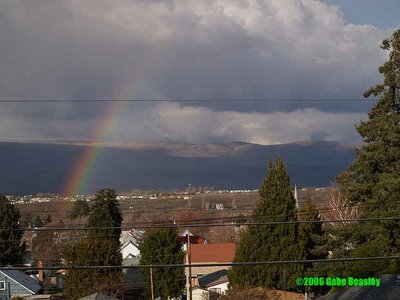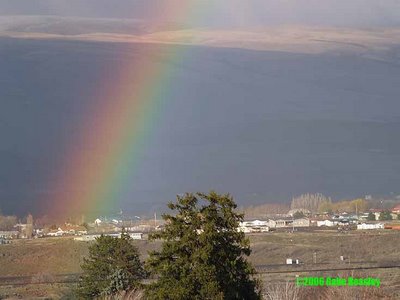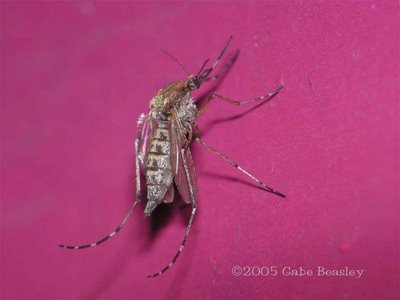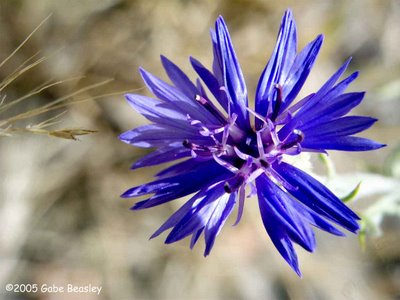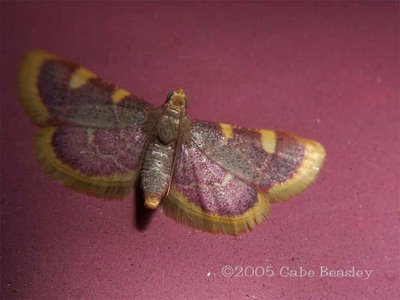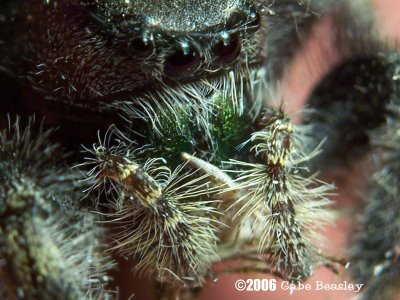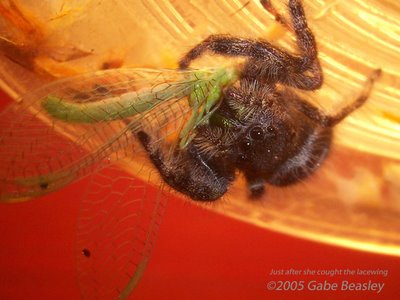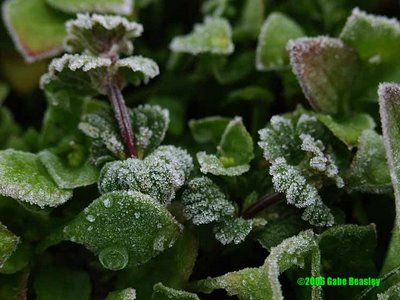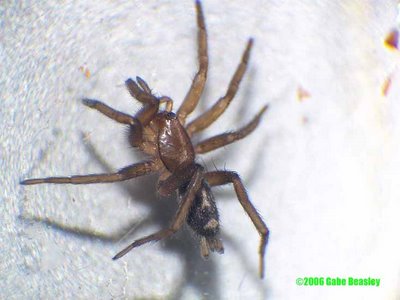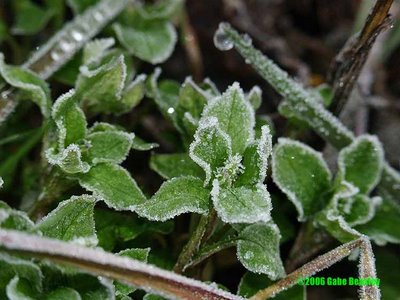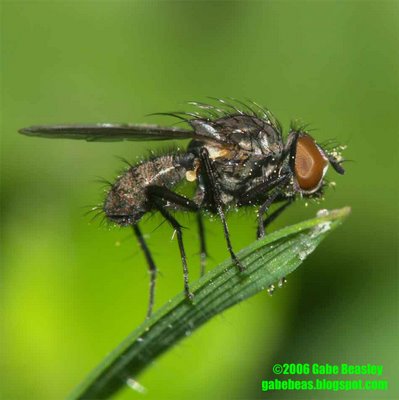 This is one of my all-time favorite pictures. It shows the power of my new digital SLR. This tiny fly was about 1/3rd the size of any housefly you might notice. It was nearly the size of a gnat. I'm not sure what family it's in or what it is. Not well labeled due to it's size--I just don't know. I am very proud of this shot and how it shows what I can do now. This picture was also taken with one of my home-made add-on micro-macro lenses that can extend a normal macro lens or extension tubes by as much as 5 to 15X. Yes, that is a blade of grass! I like my macro lens.
This is one of my all-time favorite pictures. It shows the power of my new digital SLR. This tiny fly was about 1/3rd the size of any housefly you might notice. It was nearly the size of a gnat. I'm not sure what family it's in or what it is. Not well labeled due to it's size--I just don't know. I am very proud of this shot and how it shows what I can do now. This picture was also taken with one of my home-made add-on micro-macro lenses that can extend a normal macro lens or extension tubes by as much as 5 to 15X. Yes, that is a blade of grass! I like my macro lens. Here is when having good macro power is worth it. I am fascinated by the macro and micro world. Here is an ant which is less then 2mm long. I wish I had this system a few years ago! When I was traveling, I saw lots of weird ants. Some of them stung BAD--others were just annoying. In the Martial islands one of the most fascinating ants I saw is less then 1mm long! Literally microscopic--it was about 1/3 to 1/2 a millimeter! Not only was it there size that amazed me--it was there speed. They jolted around faster then any ants or for that matter insects, I've ever seen. And I've been from Java to Norway looking at bugs. They say the Tiger Beetle is the fastest Insect for body size--but those tiny ants could run at nearly half or a bit more the walking speed of a normal person (the ants probably were doing 1mph). There super speedy ants followed sent trails as at that speed. The eyes and brain could not respond to anything else. When I go back to the martial Islands I will get some pictures. Unfortunately I still don't know if I can ever put a movie or video clip in this site to show you. This is something you almost have to see to believe.
Here is when having good macro power is worth it. I am fascinated by the macro and micro world. Here is an ant which is less then 2mm long. I wish I had this system a few years ago! When I was traveling, I saw lots of weird ants. Some of them stung BAD--others were just annoying. In the Martial islands one of the most fascinating ants I saw is less then 1mm long! Literally microscopic--it was about 1/3 to 1/2 a millimeter! Not only was it there size that amazed me--it was there speed. They jolted around faster then any ants or for that matter insects, I've ever seen. And I've been from Java to Norway looking at bugs. They say the Tiger Beetle is the fastest Insect for body size--but those tiny ants could run at nearly half or a bit more the walking speed of a normal person (the ants probably were doing 1mph). There super speedy ants followed sent trails as at that speed. The eyes and brain could not respond to anything else. When I go back to the martial Islands I will get some pictures. Unfortunately I still don't know if I can ever put a movie or video clip in this site to show you. This is something you almost have to see to believe. And here is a size perspective. I was not really aiming well as I had to hold the ruler and the camera at the same time. That's hard when doing very careful macro shots. But this gives you an idea of size. I can get even closer then this but most insects and other stuff don't require that. As the ruler says--it's in millimeters (here about 4-5mm across)
And here is a size perspective. I was not really aiming well as I had to hold the ruler and the camera at the same time. That's hard when doing very careful macro shots. But this gives you an idea of size. I can get even closer then this but most insects and other stuff don't require that. As the ruler says--it's in millimeters (here about 4-5mm across)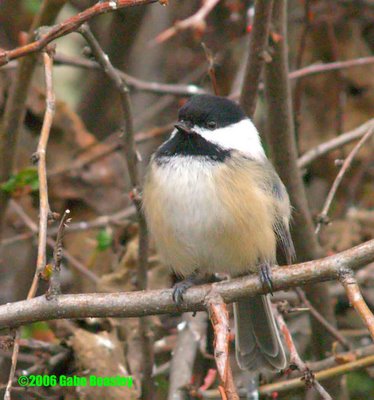 THANK YOU FOR COMMENTS-I HOPE MY SITE NAME CHANGE WAS WISE
THANK YOU FOR COMMENTS-I HOPE MY SITE NAME CHANGE WAS WISEThank you for all the comments you have made and continued sales. I could really use more sales--my budget is low. And I want to thank my Mentor in Photography Ron Beasley, for helping me build this site. I cannot afford a full commercial website. So e-mail me if you are interested in buying the full sized file version of any of these pictures. I can mail a CD or send full size pictures to anyone via high-speed Internet. I very much enjoy suggestions or comments or questions--notice you can leave one without leaving your e-mail address but you must remember to leave your e-mail address for me to reply to a question or request. Thanks for all your compliments and acknowledgements so far. Hopefully my URL and insect names will keep people looking for insect and spider pictures as well as the rest of my pictures with my new website name.

I had this camera as my main video camera. If anyone has a 3CCD or pro-cam out there and wants to give it to a good cause-- please let me know! I could sure use it and any camera/video gear. I would be glad to pay for shipping. I am a low budget artist trying to get known and can use any help I can get. Thank you.

Above--A starling I think, that wildlife lens I got really does the job. I love it. I can sit out there for hours watching these strange little birds. It's incredible they keep warm given there size.
VIEWS FROM THE DALLES
 I saw this as I walked home from my photo-walk yesterday. Dusty dirt roads, old buildings and many machines and cars from all ages, if The Dalles has a soul it's that timeless quality that does not go away. A small town can be good--or bad. One thing is for sure--I hate first impressions. In small town like this I've more then once done a very good job and making horrible ones! Living in a small town can be hard--so I go see my dad and Step mom in California whenever I can.
I saw this as I walked home from my photo-walk yesterday. Dusty dirt roads, old buildings and many machines and cars from all ages, if The Dalles has a soul it's that timeless quality that does not go away. A small town can be good--or bad. One thing is for sure--I hate first impressions. In small town like this I've more then once done a very good job and making horrible ones! Living in a small town can be hard--so I go see my dad and Step mom in California whenever I can.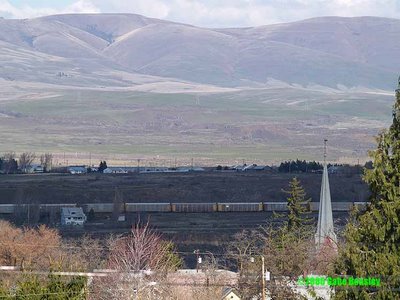 I thought I would show some of the views we have here in The Dalles. Even though I can't find a woman and it can be really boring sometimes--you cannot beat The Dalles. A small town which from the top of the ridge you can fit into a 50mm film lens. The views, shades and lighting are incredible here. These pictures were taken not far from my home. Make sure to click on these shots for large views!
I thought I would show some of the views we have here in The Dalles. Even though I can't find a woman and it can be really boring sometimes--you cannot beat The Dalles. A small town which from the top of the ridge you can fit into a 50mm film lens. The views, shades and lighting are incredible here. These pictures were taken not far from my home. Make sure to click on these shots for large views!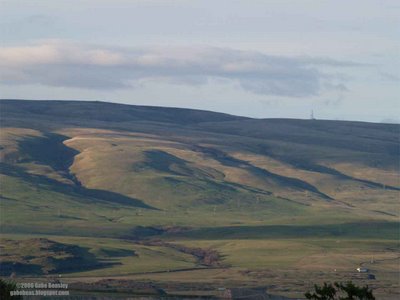 More hills painted with many colors. From snow to greens now. They look small, but this is very much a mountain ridge. There are several highways with full sized semi-trucks on them which cannot even be seen on these mountains. Not until you zoom in with a high powered lens do you really realize how big those mountains are. This is across the Columbia river to the Washington side.
More hills painted with many colors. From snow to greens now. They look small, but this is very much a mountain ridge. There are several highways with full sized semi-trucks on them which cannot even be seen on these mountains. Not until you zoom in with a high powered lens do you really realize how big those mountains are. This is across the Columbia river to the Washington side.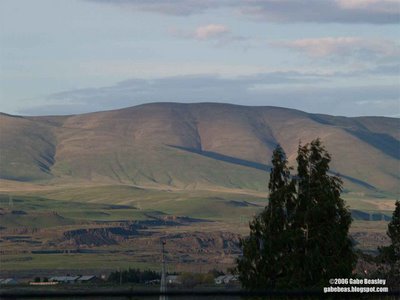 Another shot from a slightly different place. The hills are on each side of the gorge,
Another shot from a slightly different place. The hills are on each side of the gorge,but the Mountains are on the Washington side. It's deceptive how large those hills
are. I will do some closer zooms sometime and post the highway up there. These
mountains are a long ways away.

Less then a month ago these Mountains showed the snow we had far longer then we had it on this side of the river. These mountains change color and I've taken way too many pictures of them. You just can't get over the view here. It is incredible.

On the other side of the scale, my wildlife lens is able to capture birds as I already have posted. I got this one just yesterday as the sun went behind the ridges. These starlings (I think that is what they are- I need a field guide) are often only 3-4 inches (70 to 85mm) high.
 This is the same fly from a defend angle. This is not a fly you would normally notice. It's about 1/3rd the size of a normal house fly. I'm not sure what species this is but it's a super small one. My new digital SLR lets me get very clear pictures in-field of insects and spiders smaller then two (2) millimeters! By far the best setup I have ever had. Not to brag--but I added over 5X the power of my macro lens with an add-on I put together.
This is the same fly from a defend angle. This is not a fly you would normally notice. It's about 1/3rd the size of a normal house fly. I'm not sure what species this is but it's a super small one. My new digital SLR lets me get very clear pictures in-field of insects and spiders smaller then two (2) millimeters! By far the best setup I have ever had. Not to brag--but I added over 5X the power of my macro lens with an add-on I put together.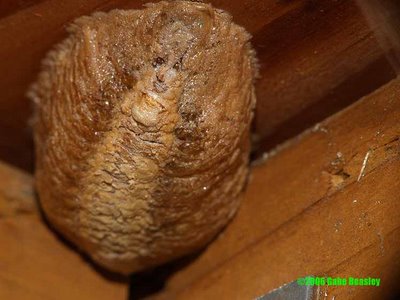 I found this and another one under my house. Guess what it is? It's a praying mantis egg sack. Those praying mantis shots from last year are probably the same mantis which laid this egg. It has not yet hatched but it will when it gets a bit warmer here. The praying Mantis is one insect that in some places is not all that common--and it's every bit of a "good bug"--eating only insects or other arthropods--even more then the ladybug--it's an insect you want to have around. The praying mantis does not eat any plant material and so if you see one of these you should let it be--if you have a garden you might have allot of help against pest insects.
I found this and another one under my house. Guess what it is? It's a praying mantis egg sack. Those praying mantis shots from last year are probably the same mantis which laid this egg. It has not yet hatched but it will when it gets a bit warmer here. The praying Mantis is one insect that in some places is not all that common--and it's every bit of a "good bug"--eating only insects or other arthropods--even more then the ladybug--it's an insect you want to have around. The praying mantis does not eat any plant material and so if you see one of these you should let it be--if you have a garden you might have allot of help against pest insects.
